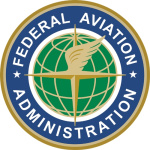- Industry: Government
- Number of terms: 35337
- Number of blossaries: 0
- Company Profile:
Ability of an aircraft to change directions along a flightpath and withstand the stresses imposed upon it.
Industry:Aviation
The net aerodynamic force parallel to the relative wind, usually the sum of two components: induced drag and parasite drag.
Industry:Aviation
The characteristic of a gyroscope that causes an applied force to be felt, not at the point of application, but 90° from that point in the direction of rotation.
Industry:Aviation
The speed at which the aircraft is moving through the air, found by correcting IAS for instrument and position errors.
Industry:Aviation
The maximum speed at which full, abrupt control movement can be used without overstressing the airframe.
Industry:Aviation
One of 4,096 four-digit discrete codes ATC assigns to distinguish between aircraft.
Industry:Aviation
Any or all forms of water particles (rain, sleet, hail, or snow) that fall from the atmosphere and reach the surface.
Industry:Aviation
A hole of specific diameter used to delay the pressure change in the case of a vertical speed indicator.
Industry:Aviation
